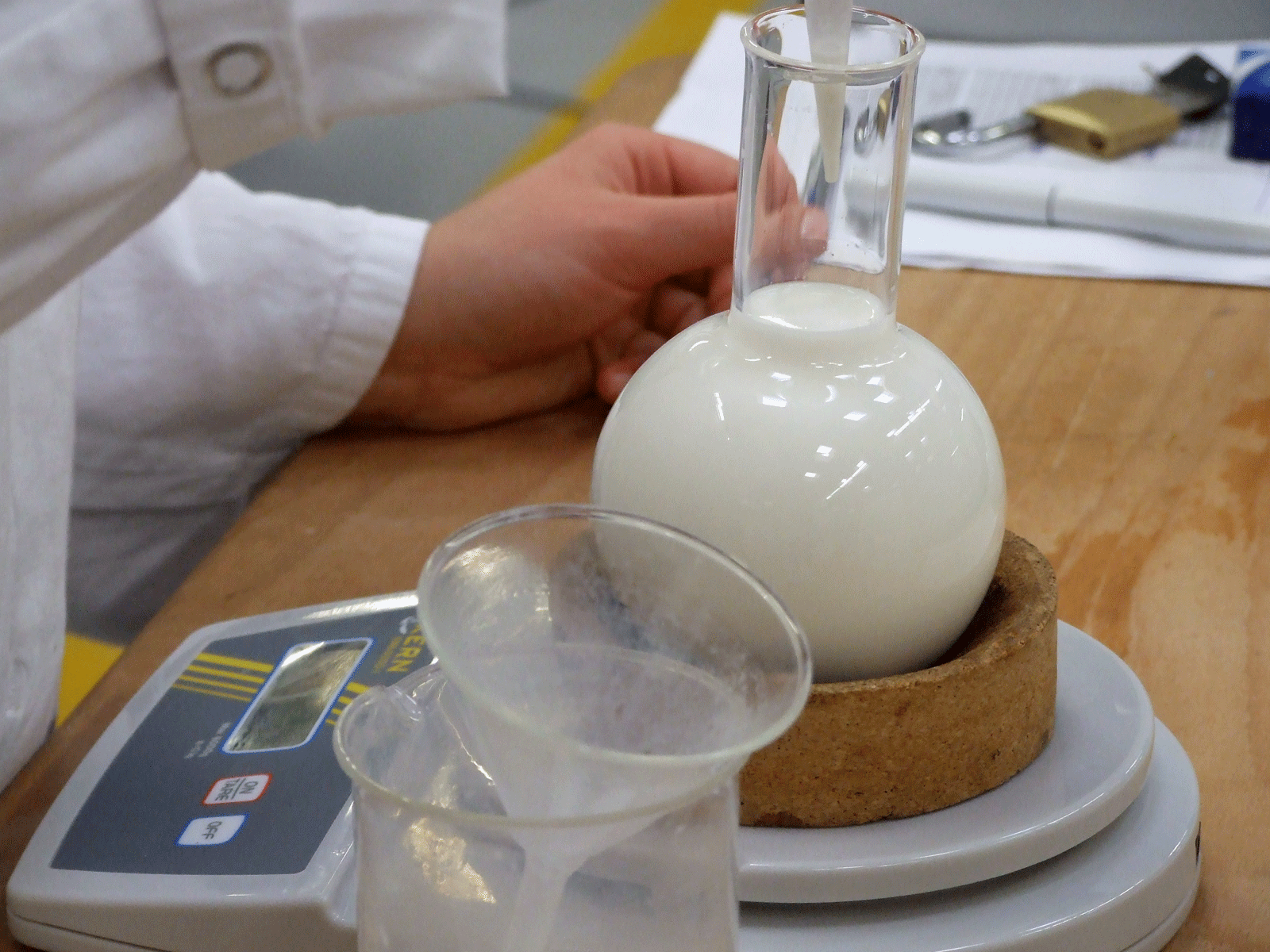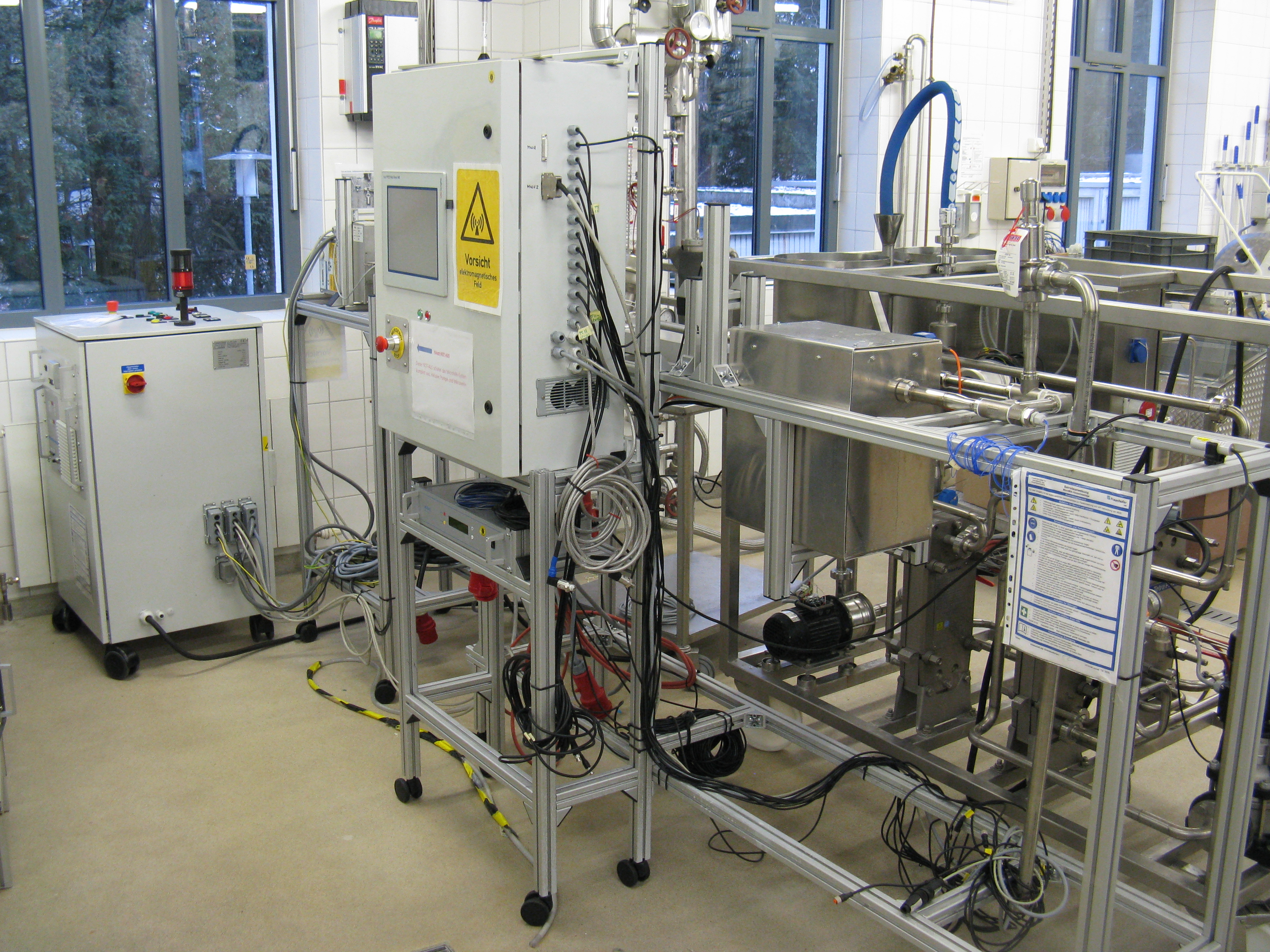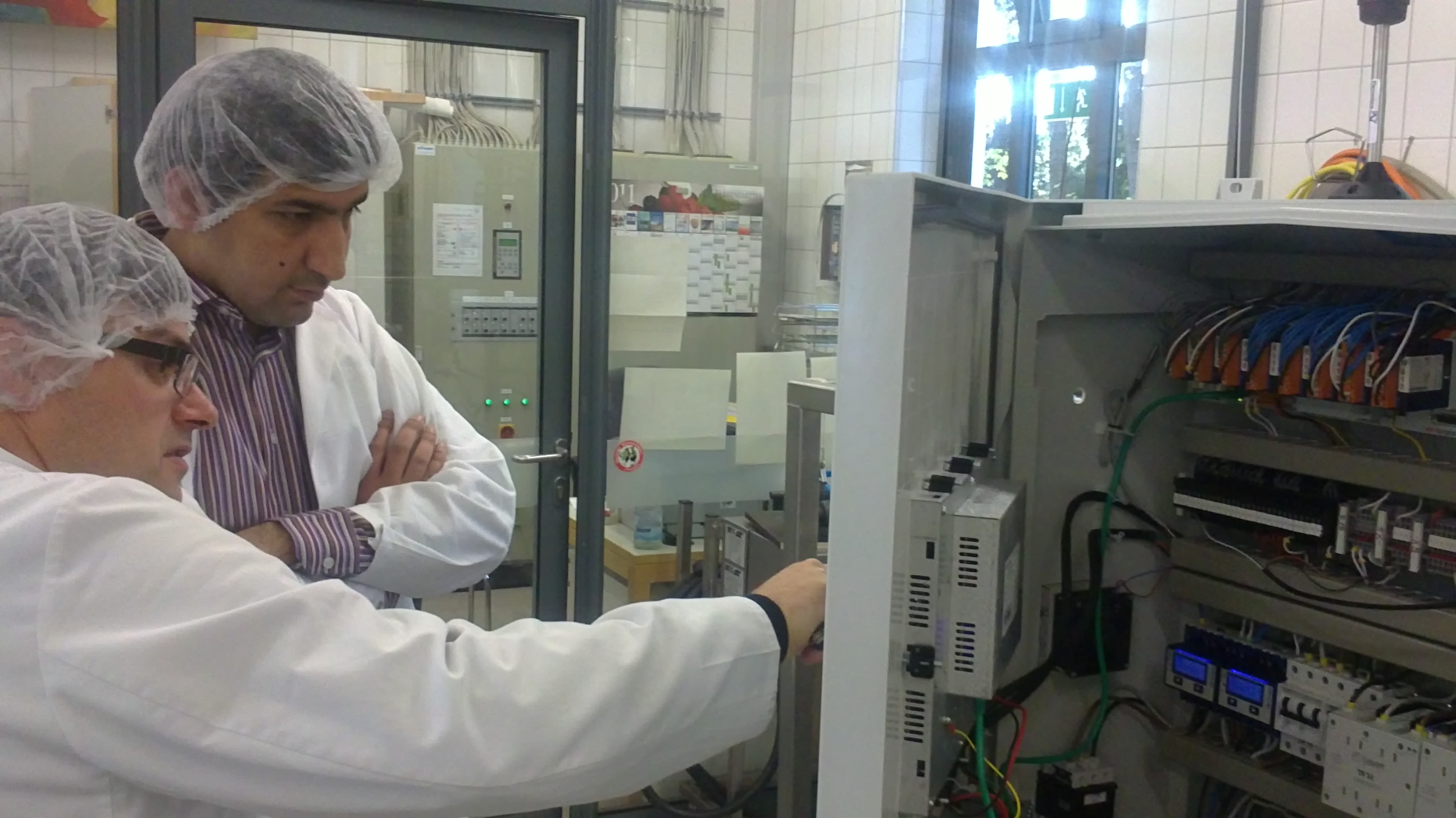The preservation of milk products requires microorganisms contained in the milk to be completely or partially eliminated by increasing the product temperature. Different processes such as pasteurization, thermization or sterilization (UHT) are differentiated according to their temperature / time profiles. The most common technique for applying heat is indirect heating using plate heat exchangers. This has the disadvantage that, due to the temperature gradient between the exchanger surface and the product, deposits can form on the surfaces of the heat exchanger (fouling). The heat exchangers must therefore be regularly cleaned, leading to considerable costs due to downtimes and the use of energy and cleaning agents. It is therefore the goal of the milk industry to minimize the plant cleaning times, maximize the production times and simultaneously save operational costs, water and energy.
Process development and test facility
After an analysis of current heating processes, various concepts for the microwave heating of milk were developed, tested and optimized using numeric simulations. The primary criterion for development was fast and regular heating. A test facility was designed, developed and constructed and initial test runs were carried out at a laboratory dairy in the University of Hohenheim, in order to validate principles of the process and determine data on the process parameters.
Industrial prototype
Based on the results of the test facility, an industrial prototype for microwave pasteurization was designed, in cooperation with the project partners from industry and using the QFD methodology. Aside from aspects of production and materials technology, the HACCP and GMP Directives for food technology devices were considered as decisive criteria, in order to enable instant integration into a production. The central task for the product “Milk” was to maintain the microbiological, nutritional and organoleptic quality while still improving the shelf-life of the milk. The system has a modular construction so that it can be both retrofitted in existing systems, as well as being applied as a stand-alone system.
Quality features and advantages
We were able to examine relevant quality characteristics by benchmark comparisons between conventional indirect heating and microwave heating using analytical reference methods. To this end, microwave test facility was integrated into an existing pasteurization system at the research dairy at the University of Hohenheim, including the newly developed automation feature.
The integrated test facility was used to investigate the effects of the gradients of the temperature increase (dT/dt) on the heating of the milk components. Microwave heating enabled a 3-fold faster temperature rise in comparison to conventional indirect heating using heat exchangers to be achieved (under comparable flow and holding time conditions). There were no significant differences in the physico-chemical (e.g. furosine and HMF formation), microbiological, nutritional (e.g. vitamin B1) and organoleptic characteristics (color and taste) of the milk between both processes. The product quality achieved using microwave pasteurization is thus comparable to that of conventional pasteurization.
The absence of the heat exchanger surface enables the operating time between cleaning cycles to be increased. This saves water and energy and increases operating efficiency.
Outlook
To date, development has focused on the pasteurization of milk, the most commonly used process for the preservation of milk on the Central European market. However, the advantages of microwave heating regarding milk quality and the reduced formation of deposits are even more significant in UHT heating. We are aiming for an extension of the MicroMilk-technique to UHT and other thermal applications in food industry, especially for highly viscous milk products with low pH values. Furthermore, the MicroMilk system can be transferred to many other food and drink products.

 Fraunhofer Institute for Interfacial Engineering and Biotechnology IGB
Fraunhofer Institute for Interfacial Engineering and Biotechnology IGB


